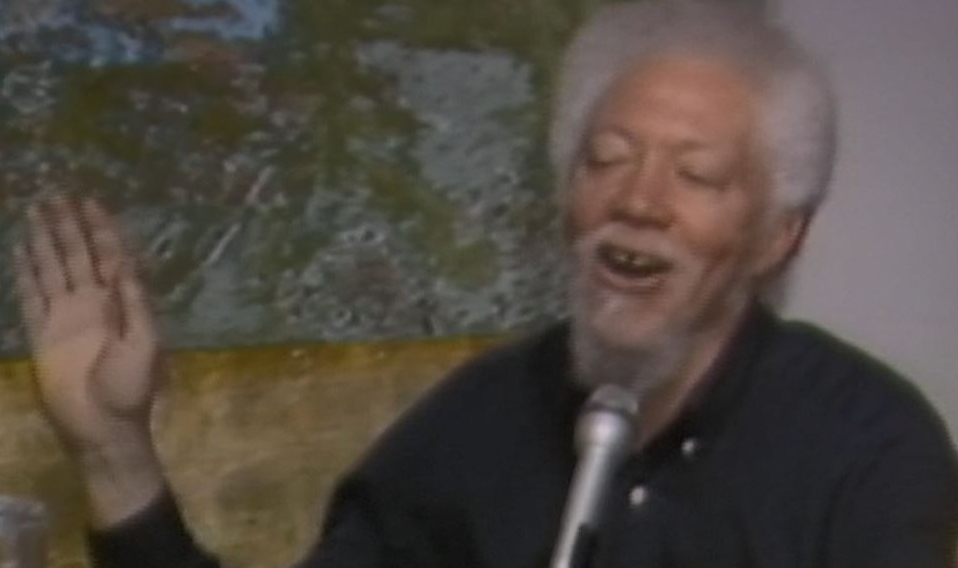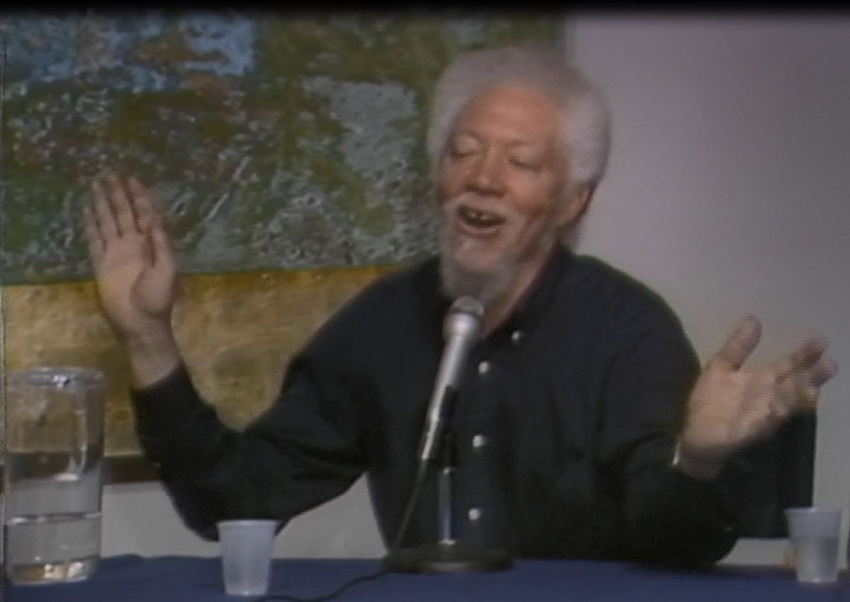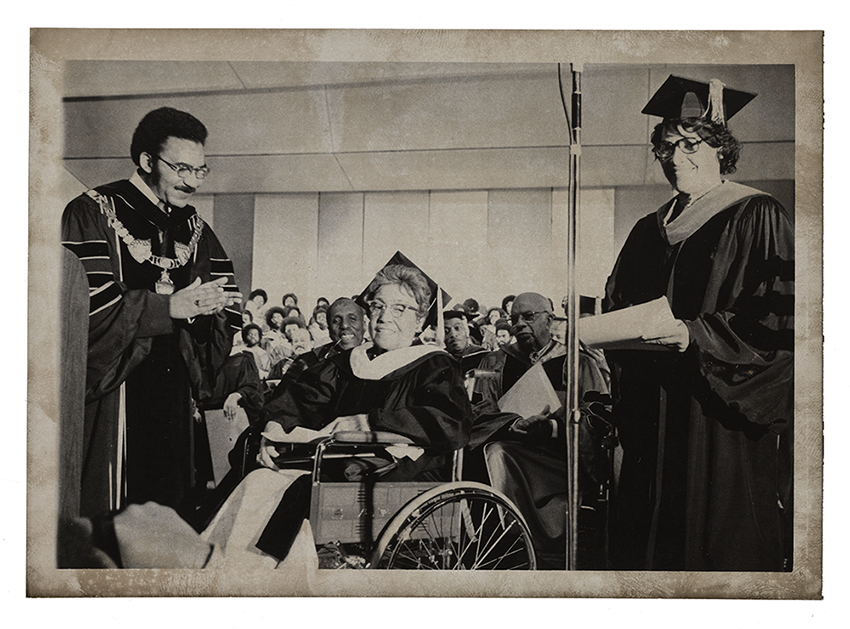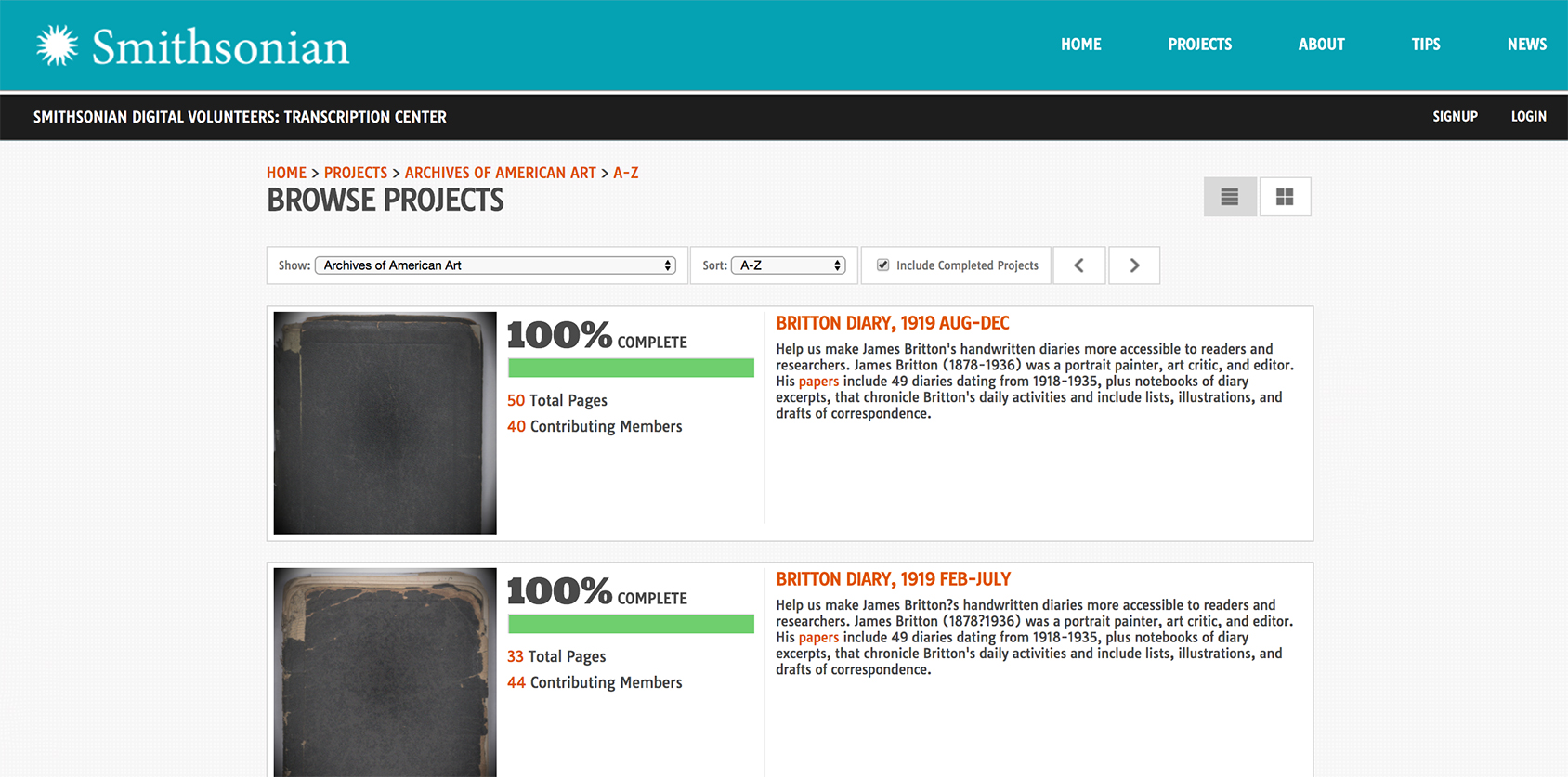Get Involved
Internship, fellowship, and volunteer opportunities provide students and lifelong learners with the ability to contribute to the study and preservation of visual arts records in America.
Teaching with Primary Sources: Benny Andrews Inspires

This essay, the third in a series prompted by the Archives of American Art's Teaching with Primary Sources workshops in 2021, is supported with funding from the Dedalus Foundation.

I always knew I wanted to teach at a Historically Black College and University (HBCU), since watching A Different World as a child in the 1990s. The sitcom was a spin-off of The Cosby Show that was supposed to follow the life and times of Denise, the second-eldest daughter in the Huxtable clan, as she went off Hillman College, a fictional HBCU in Virginia. The storyline evolved as the main character had a real-life pregnancy and the focus shifted to Whitley Gilbert (played by Jasmine Guy). Whitley was an art history major, who graduated from Hillman and became a corporate art buyer. In one episode, Whitley organizes an exhibition that includes a painting of a black Madonna. A Hillman donor saw the painting as offensive, because he tied the image to the epidemic of crack-addicted, black mothers and their babies. When the episode aired in 1991, the nation was still reeling from Ronald Reagan’s administration. He notoriously characterized black women as “welfare queens.” The combination of these two social phenomena that pathologized black women led to the donor seeing the black body as unfit for portraying the divine. Because of the donor’s scathing criticism of the painting, Whitley is forced to change the exhibition’s venue, to defend the artist. In response she said: “Art should challenge our assumptions about ourselves and the world.” It was through Whitley’s story on A Different World, that I saw visual art as a catalyst of black culture.
I became an art history major too. After graduate school, I took a teaching position at a Predominantly White Institution (PWI), where I taught art appreciation. I was horrified by my first semester’s teaching evaluations. Apparently, students were upset that I included too many black artists in my lectures. However, I was only tailoring my lectures to my area of expertise.
Eventually, I left the PWI and began teaching at Fort Valley State University (FVSU), an HBCU in Georgia. Students appreciated my focus on black artists, since the population was predominantly black. However, I encountered a different problem. I assigned a traditional research paper for my art history survey’s final project. I was devastated and deflated by the results. A majority of my students had plagiarized by lifting content from the Internet. I do not think they plagiarized because they were bad students, but because they lacked confidence in their unique positionality as HBCU students. I wanted to deter this behavior by showing students that their voices were important.

How could I show these students how special their voices were and that their contributions matter and have infinite value? The answer was the archive—highlighting the achievements of HBCU students who came before them and connecting those achievements to their own stories. I saw this research paper fail as an opportunity to create a plagiarism-proof writing assignment. I asked students to research an artist who was trained at an HBCU, then respond to that legacy writing about their own unique positionality. Drawing from Lauren Fournier’s Autotheory as Feminist Practice in Art, Writing, and Criticism, I wanted a way for students to come to art historical theories through themselves. Arianne Zwartjes writes: “autotheory is the chimera of research and imagination. It brings together autobiography with theory and a focus on situating oneself inside a larger world, and it melds these different ways of thinking in creative, unexpected ways.” Ultimately, I wanted my students to perceive the significance of their life and experiences by seeing the interstices between their lives the lives of HBCU art students before them.
As a participant in the Archives of American Art’s Teaching with Primary Sources workshop, I developed an assignment with the students’ experiences at an HBCU as my staring point. The Archives had vast resources for this art historical autotheory assignment. I identified artists in the collection who had studied or taught at HBCUs. My search led me to Romare Bearden, Michael Harris and Barbara Jones-Hogu—two of the founders of AfriCOBRA—Hale Woodruff, David Driskell, Richard Powell, Jeff Donaldson, Alma Thomas, Charles White, Elizabeth Catlett, John Biggers, Loïs Mailou Jones, and Benny Andrews. I presented this list to my students and had them choose an artist to research. Then I instructed them to write about their experience as an HBCU student and how it compared to their artist. We briefly discussed the lists of artists in class and which HBCUs each artist attended. I had a fairly small group; so, there were no overlaps in the artists the students chose. I had the students do a scaffolded essay assignment in which they submitted a proposal, abstract, annotated bibliography (to include the Archives’ resources), and finally the essay.
The most inspired submission came from a non-traditional student who had earned his GED at age twenty-nine and was now matriculating at FVSU. He graduated in the Fall 2021 ceremony with a Bachelor of Arts in Media Studies and hopes to go on to graduate school. He chose to write about Benny Andrews (1930–2006), who was an FVSU alumni, renowned artist, Air Force veteran, and cofounder of the Black Emergency Cultural Coalition. My student saw himself in Andrews’s story as a young man seeking education at FVSU to escape poverty in rural Georgia. Andrews’s hometown of Plainview was closer to the University of Georgia than FVSU, but segregation kept him out of that institution. HBCUs were founded to address these types of racial disparities and continue to serve precarious student populations, such as low-income and first-generation students. Three-fifths of HBCU students are the first in their families to attend college, while seventy percent of these students receive Pell grants, which are designed for low-income students. My student brilliantly and poetically connected his life story to Andrews’s and demonstrated the triumph and resilience of HBCU students and his own.
Elizabeth Hamilton, Ph.D. is an assistant professor at Fort Valley State University and art historian whose research focuses on visual culture of the African diaspora, feminism, and Afrofuturism. She is working on her first book: “Charting the Afrofuturist Imaginary in African American Art: The Black Female Fantastic”(Routledge). Dr. Hamilton has published research in Nka: The Journal of Contemporary African Art, African Arts, and the International Review of African American Art
Explore More:
Internship, fellowship, and volunteer opportunities provide students and lifelong learners with the ability to contribute to the study and preservation of visual arts records in America.

You can help make digitized historical documents more findable and useful by transcribing their text.
Visit the Archives of American Art project page in the Smithsonian Transcription Center now.
A virtual repository of a substantial cross-section of the Archives' most significant collections.
Add new comment